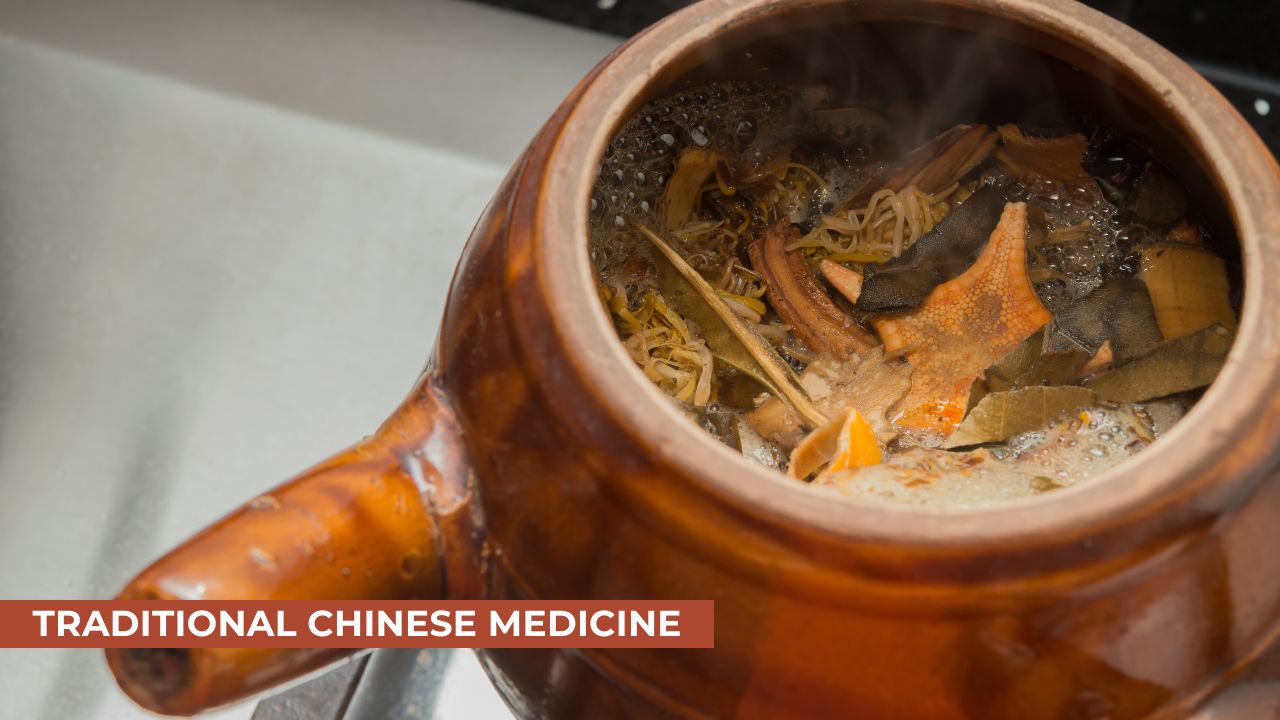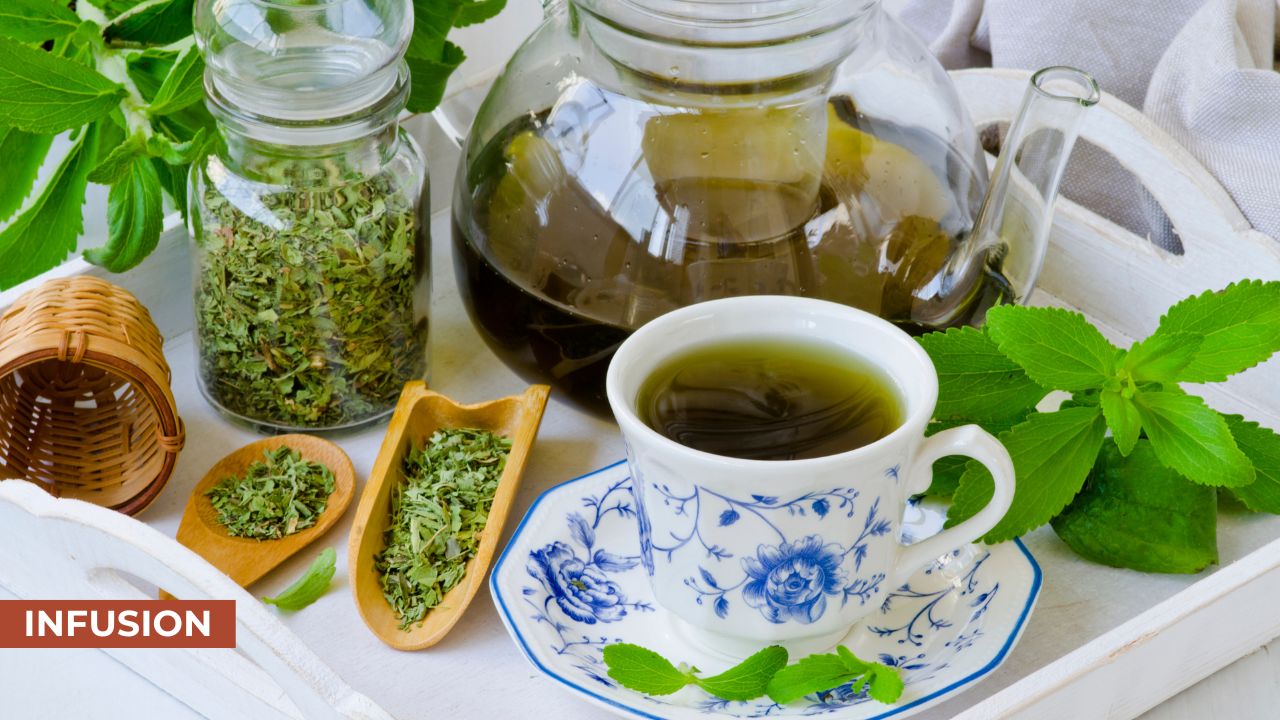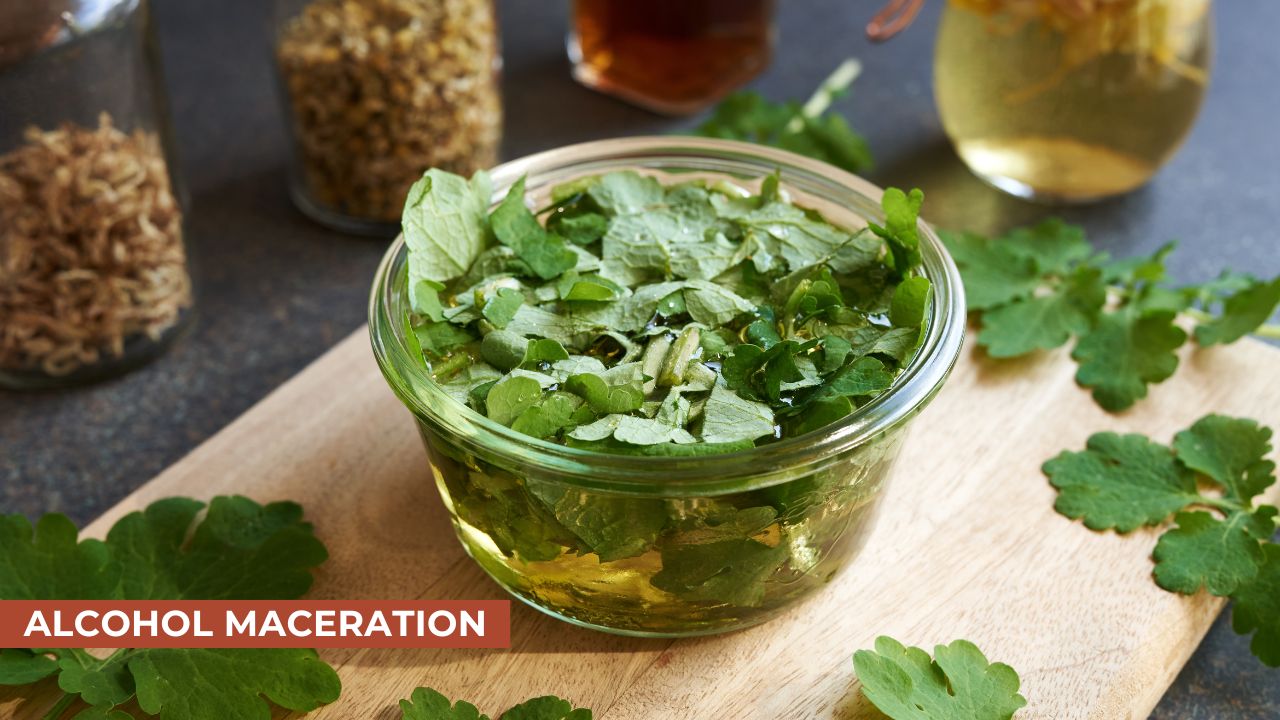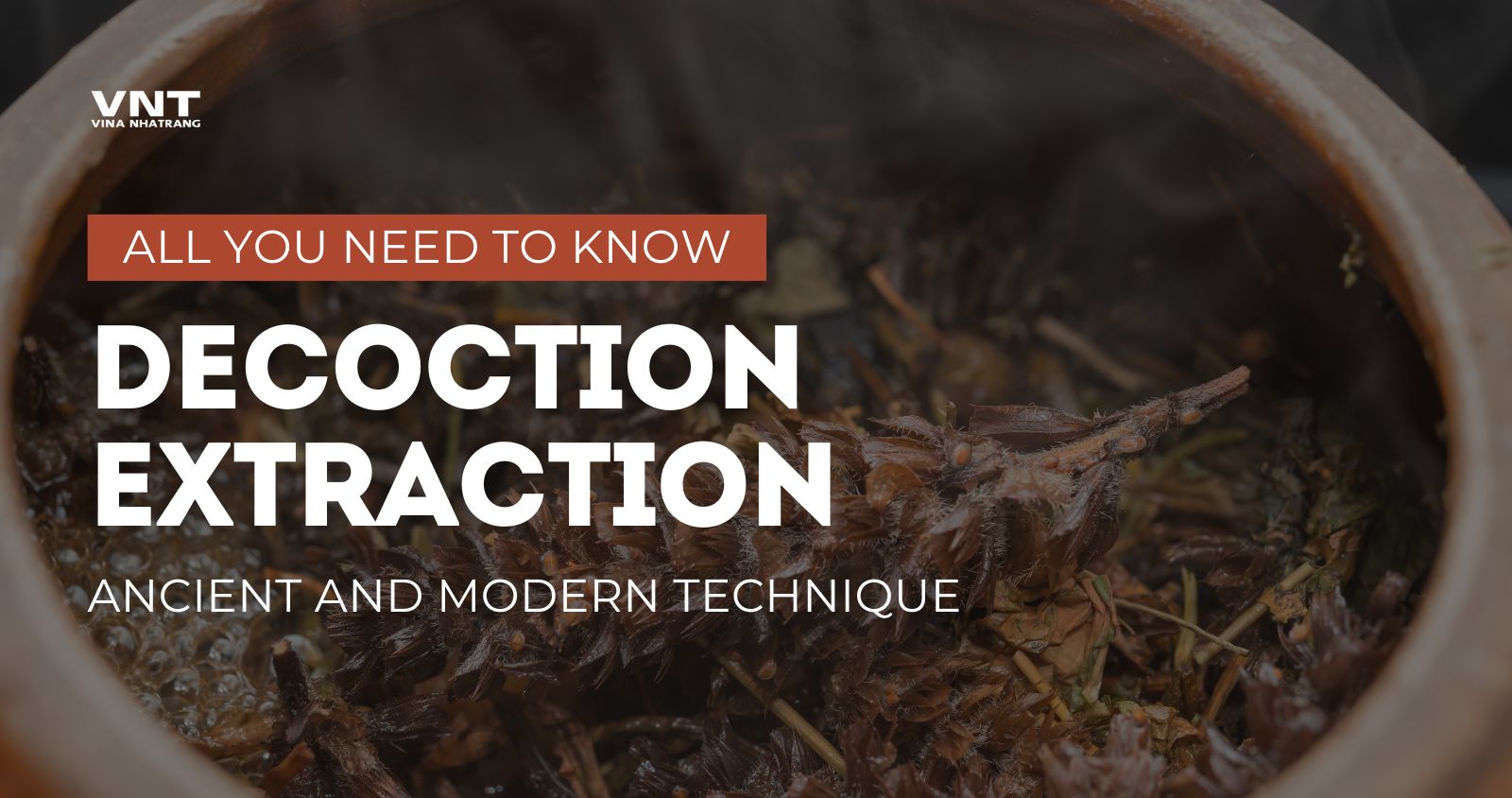Decoction extraction is a traditional method of extracting active compounds from plant materials by boiling them in water. This process has been used for centuries in various cultures to prepare herbal remedies, medicinal drinks, and nutritional supplements. Unlike other extraction methods such as infusion or maceration, decoction relies on high temperatures and prolonged boiling to break down tough plant materials like roots, barks, and seeds.
The significance of decoction extends beyond traditional medicine into modern pharmaceutical and food industries, where it plays a crucial role in obtaining potent bioactive compounds. Understanding decoction extraction is essential for herbalists, scientists, and anyone interested in natural medicine.
Understanding the Decoction Process
Decoction extraction involves several critical steps to ensure maximum extraction of beneficial compounds:
- Selection of Materials – Choosing the right plant parts such as roots, barks, or seeds.
- Preparation – Cleaning, cutting, or crushing the material to increase surface area.
- Boiling – Simmering the plant material in water for a specified time.
- Filtration – Straining out the solid plant parts to collect the liquid extract.
- Storage – Storing the decoction for later use, often in glass containers.
The boiling process helps release tannins, alkaloids, and essential oils, making decoction an effective method for extracting medicinal compounds from hardy plant materials.
History and Traditional Uses of Decoction Extraction
Decoction has been a cornerstone of herbal medicine in various cultures:
- Traditional Chinese Medicine (TCM): Used in preparing herbal tonics and treatments for ailments like colds, fevers, and digestive disorders.
- Ayurveda: Decoctions, known as “Kashayams“, are used for detoxification and treating chronic diseases.
- Indigenous Healing Practices: Many native cultures, including African and Native American traditions, use decoctions for healing and spiritual rituals.
These practices highlight the deep-rooted historical importance of decoction extraction in natural healing.

Difference Between Decoction, Infusion, and Maceration
Decoction, infusion, and maceration are three widely used methods for extracting active compounds from plant materials. Each technique has its unique process, applications, and benefits. Understanding the differences between them helps in selecting the most suitable method depending on the type of plant material and the desired extract.
1. Decoction
Decoction involves boiling plant materials in water to extract their active ingredients. This method is particularly effective for tough plant parts such as roots, barks, and seeds that require high temperatures to break down and release beneficial compounds.
Process of Decoction:
- Plant material is chopped or crushed to increase surface area.
- The material is placed in a pot with water, usually at a ratio of 1:4 (one part herb to four parts water).
- The mixture is brought to a boil and simmered for 15–45 minutes, depending on the material.
- The liquid is strained to remove solid residues.
✅ Advantages of Decoction:
✔ Extracts tough plant materials: Ideal for roots, barks, and seeds.
✔ Releases deep-seated compounds: Boiling breaks down plant cell walls.
✔ Produces concentrated extracts: Higher potency compared to infusion.
❌ Disadvantages of Decoction:
❌ Time-consuming: Requires longer preparation time.
❌ Heat-sensitive compounds lost: Some volatile oils may evaporate.
❌ Not suitable for delicate herbs: Can destroy delicate nutrients.
2. Infusion
Infusion is a gentler extraction method that involves steeping plant material in hot or cold water without boiling. This method is typically used for softer plant parts like leaves, flowers, and stems.
Process of Infusion:
- The plant material is placed in a cup or teapot.
- Hot (but not boiling) water is poured over the material.
- The mixture is allowed to steep for 5–15 minutes, depending on the herb.
- The liquid is strained before consumption.
✅ Advantages of Infusion:
✔ Quick and easy: Requires minimal preparation time.
✔ Preserves delicate compounds: Ideal for volatile oils and flavonoids.
✔ Mild and pleasant taste: Less bitter compared to decoction.
❌ Disadvantages of Infusion:
❌ Less effective for tough materials: Cannot fully extract hard roots or barks.
❌ Weaker potency: Contains fewer active compounds than decoctions.
❌ Short shelf life: Must be consumed soon after preparation.

3. Maceration
Maceration is a cold extraction method where plant materials are soaked in a liquid (usually water, alcohol, or oil) for an extended period to extract active compounds.
Process of Maceration:
- The plant material is finely chopped or ground.
- It is placed in a jar and covered with a solvent (e.g., water, alcohol, oil).
- The mixture is left to sit for several hours to several weeks.
- The liquid is strained, and the extract is used as needed.
✅ Advantages of Maceration:
✔ Preserves heat-sensitive compounds: No heat exposure, preventing degradation.
✔ Suitable for alcohol-based extractions: Ideal for tinctures and oil infusions.
✔ Can be used for long-term extractions: Enhances potency over time.
❌ Disadvantages of Maceration:
❌ Takes a long time: May require weeks for full extraction.
❌ Requires proper storage: Risk of mold or spoilage if not done correctly.
❌ Not as effective for some compounds: Certain elements extract better with heat.

Comparison Table: Decoction vs. Infusion vs. Maceration
| Method | Process | Best Used For | Time Required | Solvent Used |
|---|---|---|---|---|
| Decoction | Boiling plant materials in water | Roots, barks, seeds | 15–45 minutes | Water |
| Infusion | Steeping in hot (not boiling) water | Leaves, flowers, soft stems | 5–15 minutes | Water |
| Maceration | Soaking in a liquid at room temperature | Delicate herbs, alcoholic tinctures, oil infusions | Several hours to weeks | Water, alcohol, oil |
Each method has its own strengths, making them suitable for different applications. Decoction is the most effective for tough plant materials, infusion works well for delicate herbs, and maceration is excellent for preserving heat-sensitive compounds.
Types of Materials Used in Decoction Extraction
Decoction is mainly used for extracting bioactive compounds from tough plant materials that require prolonged heating to release their properties. The most common plant parts used in decoctions include:
1. Roots
Roots are one of the primary materials used in decoction extraction due to their dense structure and high concentration of medicinal compounds.
Common Roots Used in Decoction:
- Ginger (Zingiber officinale): Used for digestive health and anti-inflammatory properties.
- Ginseng (Panax ginseng): Known for boosting energy and immune function.
- Licorice (Glycyrrhiza glabra): Soothes throat irritation and supports respiratory health.
- Turmeric (Curcuma longa): A powerful anti-inflammatory and antioxidant agent.
2. Barks
Barks contain high levels of tannins, alkaloids, and essential oils, making them ideal for decoction.
Common Barks Used in Decoction:
- Cinnamon Bark (Cinnamomum verum): Used for blood sugar regulation and digestion.
- Willow Bark (Salix alba): A natural pain reliever, used as an alternative to aspirin.
- Pau d’Arco (Tabebuia impetiginosa): Known for antifungal and immune-boosting properties.
3. Seeds and Pods
Seeds and pods contain concentrated nutrients and oils, which can be effectively extracted through decoction.
Common Seeds Used in Decoction:
- Fennel Seeds (Foeniculum vulgare): Aid digestion and relieve bloating.
- Cardamom (Elettaria cardamomum): Used for respiratory and digestive health.
- Fenugreek Seeds (Trigonella foenum-graecum): Beneficial for blood sugar control.
4. Hard Stems and Twigs
Some plant stems and twigs are rich in medicinal properties and require boiling to extract their compounds.
Common Stems and Twigs Used in Decoction:
- Horsetail (Equisetum arvense): High in silica, beneficial for bone and hair health.
- Ashwagandha Stem (Withania somnifera): Used in Ayurvedic medicine for stress relief.
Modern Applications of Decoction Extraction
While decoction is an ancient practice, it continues to play a significant role in various modern industries.
1. Pharmaceutical Industry
Decoction is widely used in pharmaceuticals for extracting active medicinal compounds. Many traditional herbal medicines are now being studied and incorporated into modern drug formulations.
Examples:
- Antiviral and immune-boosting drugs derived from ginseng and licorice.
- Pain-relieving medications made from willow bark extracts.
2. Herbal Medicine and Nutraceuticals
Decoctions are a fundamental part of herbal medicine, both in traditional and modern herbal practices. Many herbal teas, tonics, and tinctures are based on decoction extraction methods.
Examples:
- Detoxification tonics made from dandelion root decoctions.
- Sleep and relaxation teas featuring valerian root and chamomile decoctions.
3. Food and Beverage Industry
Decoction is commonly used in the food industry to extract flavors and bioactive compounds for teas, soups, and functional beverages.
Examples:
- Chai tea (made by decocting black tea, ginger, cinnamon, and cardamom).
- Bone broth (a slow-cooked decoction of animal bones for collagen extraction).
4. Cosmetics and Skincare
Herbal decoctions are used in natural skincare products for their antioxidant and anti-inflammatory properties.
Examples:
- Herbal hair rinses made from nettle or rosemary decoctions.
- Soothing lotions containing chamomile and calendula decoctions.
5. Scientific Research and Biotechnology
Decoction methods are used in laboratories to study plant-based compounds and their effects on human health.
Examples:
- Extraction of polyphenols from green tea for anti-aging research.
- Study of medicinal mushrooms like Reishi and Chaga using decoction techniques.
Conclusion
Decoction extraction remains a vital method in traditional and modern medicine, offering a reliable way to extract potent compounds from tough plant materials. While ancient in origin, it continues to be relevant today in pharmaceuticals, herbal medicine, and even culinary applications. Understanding the science and art of decoction can empower individuals to harness the benefits of natural healing remedies effectively.




